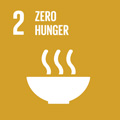- Docente: Kristina Landa
- Credits: 5
- SSD: L-LIN/21
- Language: Italian
- Moduli: Kristina Landa (Modulo 1) Lyubov Bezkrovna (Modulo 2)
- Teaching Mode: Traditional lectures (Modulo 1) Traditional lectures (Modulo 2)
- Campus: Forli
- Corso: First cycle degree programme (L) in Intercultural and Linguistic Mediation (cod. 8059)
Learning outcomes
Students will familiarize themselves with professional ethical problems and will be able to use the fundamental strategies of liaison/dialogue interpreting and apply the techniques and skills acquired in the field of linguistic mediation.
Course contents
Lessons (40h) will be held twice a week during the second term and are organised in two parts (20h).
The first lesson of the week will include additional activities in order to foster the necessary dialogue interpreting skills. These lessons will deal with active listening exercises, comprehension, memorization and summarization of oral texts, cloze tests, rephrasing and sight-translation.
The second lesson of the week, together with an Italian mother tongue teacher (Dr. Sara Polidoro), will deal with liaison interpreting exercises by doing simulations with a pre-prepared script. Every course topic will be communicated to the students beforehand.
Topics covered during the first part of the course (with Dr. Polina Krokha):
1) health care (interpreting in the social and health care context, interpreting in hospitals).
2) food industry (manufacturing and sale of products ‘Made in Italy’).
Topics covered during the second part of the course (with Dr. Kristina Landa):
1) business negotiations (in different sectors, mainly transport and flooring sector) regarding issues as airport pick-up, signing of the concession contract for the exclusive distribution, logistics.
2) travel assistance for foreign clients: museums, police, migration services (to be discussed with the students)
3) interviews at the exhibitions or/and cultural events (Book Fair, presentation of Prosecco Doc in the Hermitage, meetings with singers/filmmakers/writers).
Further topics o/and changes will be discussed with the students during the lessons.Readings/Bibliography
1. ALEKSEEVA I. (2004), Professional'nyj trening perevodčika, Sankt-Peterburg, Sojuz, 2004.
2. CHESSA F. (2012), Interpretazione dialogica. Le competenze per la mediazione linguistica, Roma, Carocci.
3. ECO U. (2003), Dire quasi la stessa cosa, Milano: Bompiani.
4. FALBO C. & VIEZZI M. (a cura di) (2014), Traduzione e interpretazione per la società e le istituzioni, Trieste, EUT.
5. FOGAZZARO E. & GAVIOLI L. (2004), “L'interprete come mediatore: riflessioni sul ruolo dell'interprete in una trattativa d'affari”, in BERSANI BERSELLI G., MACK G. & ZORZI D. (a cura di), Linguistica e interpretazione, CLUEB, Bologna, pp. 169-188.
6. GARZONE C. (a cura di) (2000), Quale curriculum linguistico per l’azienda? Linguisti e aziendalisti a confronto, Bologna, CLUEB.
7. GAVIOLI L. (a cura di) (2009), La mediazione linguistico-culturale: Una prospettiva interazionista, Perugia, Guerra Edizioni.
8. MACK G. & RUSSO M. (a cura di) (2005), Interpretazione di trattativa: la mediazione linguistico-culturale nel contesto formativo e professionale, Milano, Hoepli.
9. STRANIERO S. F. (2008), Elementi di grammatica contrastiva russo-italiano, Roma, Aracne.Teaching methods
1)Preparatory exercises:
Memorization, sight-translation, interlinguistic and intralinguistic rephrasing exercises, summarizing, recall, close, textual reconstruction starting with key elements.
2) Dialogue interpreting simulations, medium difficulty.
Students will be asked to prepare glossaries for upcoming exercises.
Assessment methods
The exam consists of a dialogue interpreting exam of about 7-8 minutes and a brief sight translation (from Italian to Russian and from Russian to Italian).
Teaching tools
Internet, digital documents, audiovisual materials on the Moodle platform, electronic dictionaries (www.classes.ru).
Office hours
See the website of Kristina Landa
See the website of Lyubov Bezkrovna
SDGs




This teaching activity contributes to the achievement of the Sustainable Development Goals of the UN 2030 Agenda.
